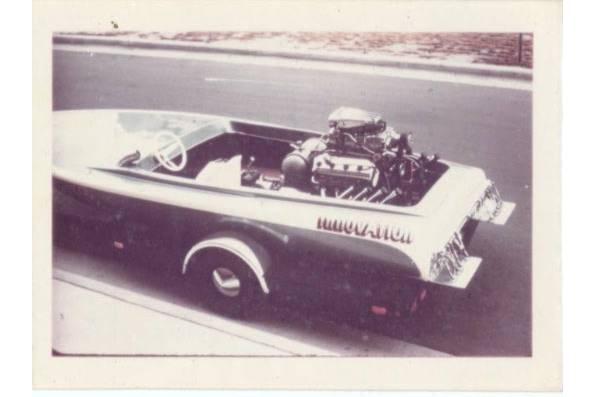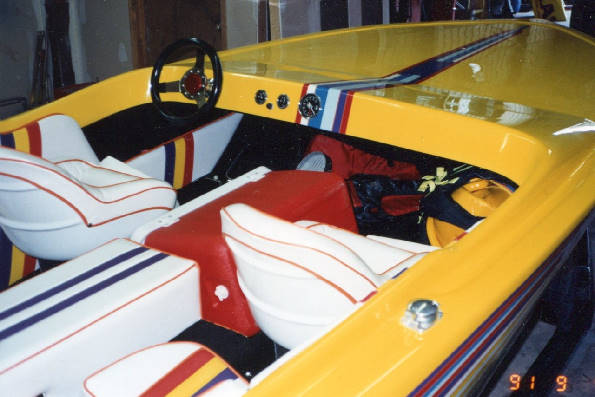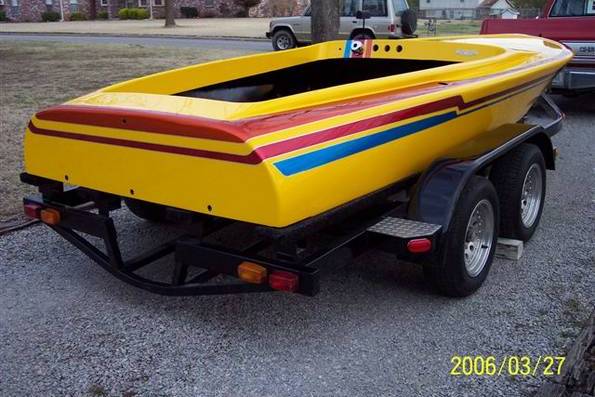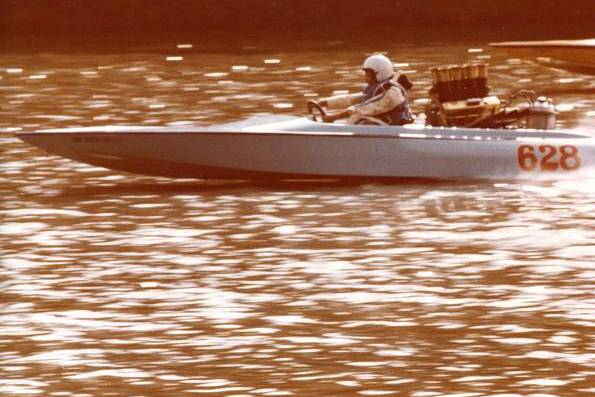Wes-Co Boat History
Wes Fisher bought a SPICO boat in the summer of 1961. He began participating in circle races in 1962 since those were the only primary type of racing available at the time.

Soon after he began his race career, Wes became a SPICO dealer and shortly thereafter became the sole distributor for SPICO boats everywhere East of the Rocky Mountains. Wes took delivery of four to six bare SPICO hulls at time direct from Bakersfield California to his shop in Wichita Kansas. Once they were in Wichita, the hulls were rigged with their steering, v-drives, underwater gear, etc. and were turned into complete boats with engines and upholstery.
In 1962, Wes and another driver participated in the first “drag race” in Oklahoma which was held on Lake Overholser in Oklahoma City. In 1963, Wes added a second boat and formed a two-boat racing team. The second boat was driven by Bobby Greenwade, an owner from Oklahoma. By 1964 circle races had given way to primarily all drag racing in Oklahoma and Texas. After the 1965 racing season, Wes began manufacturing his own Wes-Co boats in his Wichita shop and did so up until 1978. Wes-Co manufactured a total of four different styles of boat hulls during that time.
Wes Fisher’s Technological Innovations
REVERSE ROTATION MOTORS
In the early 1960s, circle racing boats ran their drive shafts off of the front-end of the engine instead of the flywheel-end, which allowed the counter-clockwise propeller torque to help guide them into the left-hand turns. That practice resulted in large numbers of broken crank shafts caused by the weaker construction of the front end of the engines.
In his search for a better solution, Wes Fisher modified a 461 cubic inch Pontiac engine by reverse-grinding the camshafts, altering the firing order, and running the motor backwards. That change allowed the racers to take advantage of the propeller torque in turns without the risk of running from the weak end of the engine.
CARBURETORS & MANIFOLDS
In the 1960s, the internal parts of factory-built automotive carburetors were optimized for the operation & acceleration for cars of that era. The factory manifold secondary carburetor ports were machined larger to allow the carburetors to be installed facing the same direction as the float bowls and other parts in cars.
The racing boat’s Pontiac Dual-Quad intake manifold openings of the era were designed for automotive applications and had smaller primary than secondary openings. That resulted in the carburetor running backwards when installed on a flywheel driven v-drive with an opposite direction of acceleration versus the acceleration with the carburetor installed in a car.
Wes Fisher found that if he bored out the existing primary manifold openings to match the existing secondary openings on the carburetor, he could reinstall the carburetor in the correct orientation. That allowed the carburetors to operate as designed which allowed the engines to create more power.
He also designed a system which pumped cool lake water to the carburetor intake manifold. That additional plumbing cooled the air in the manifold and produced a denser fuel-to-air charge resulting in more horsepower from the engine.
COUNTER-ROTATING DUAL PROP DRIVE
In 1967, Wes-co built the first counter-rotating, dual-shaft pure flat bottom boat as a solution to the propeller torque delivered by powerful motors. Wes-Co built a sand-cast aluminum case for the transfer box which was then machined to accept Casale shafts, bearings, and gears. During testing, Wes-Co found that transom lift was an issue due to the limited propeller designs at the era. A second hull was subsequently manufactured which recessed half of each propeller into a tunnel in the bottom of the hull. Those tunnels allowed the use of a 5° angle driveshaft which delivered better performance. That design was granted a United States patent in 1971.
Reference: US Patent: US3745963A "Boat Structure"
Download: Wes Fisher Dual Drive Patent.pdf
The boat in the photos below, named Double Trouble, was built with the dual drive. In the first version, it had a fuel injected Chrysler engine running on nitromethane and alcohol, but it did not have enough power to pull the extra load of more gears, two props, etc. Later, Double Trouble had a supercharged Chrysler engine which ran using nitromethane fuel. That engine had sufficient power, but the extra lift from two props pushed the transom of the boat out of the water at higher speeds.
Below is the second 1968 style Wes-co hull which used the patented dual drive. This boat's name was Innovation. In the first photo, you can see the dual shaft transfer case just on the motor side of the dashboard of the boat. Next to the engine is the Casale "Z" drive that had the ability to change gears for testing, that had an in/out box to provide for out of gear operation, and that took power from the engine and put it into the input side of the transfer case.
Below is a photo of the input to the transfer gear box from the Z drive, and the two output shafts. The second photo shows the opposite side of the box where the bearing caps can be seen for each one of the gear shafts.
Get in Touch with Us
I f you have any questions, comments, old photos, or would just like to set up some time for a conversation, please email.
Wichita, KS
Email: info@wescoboats.com























